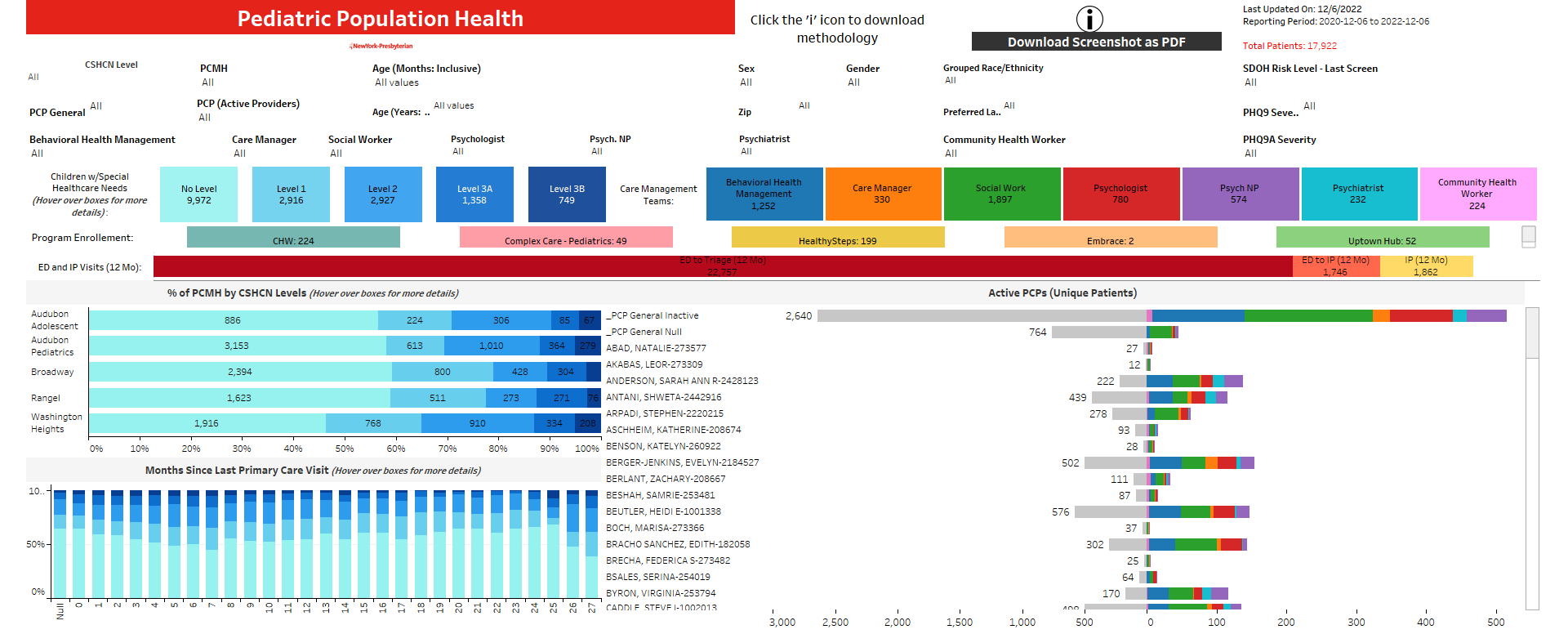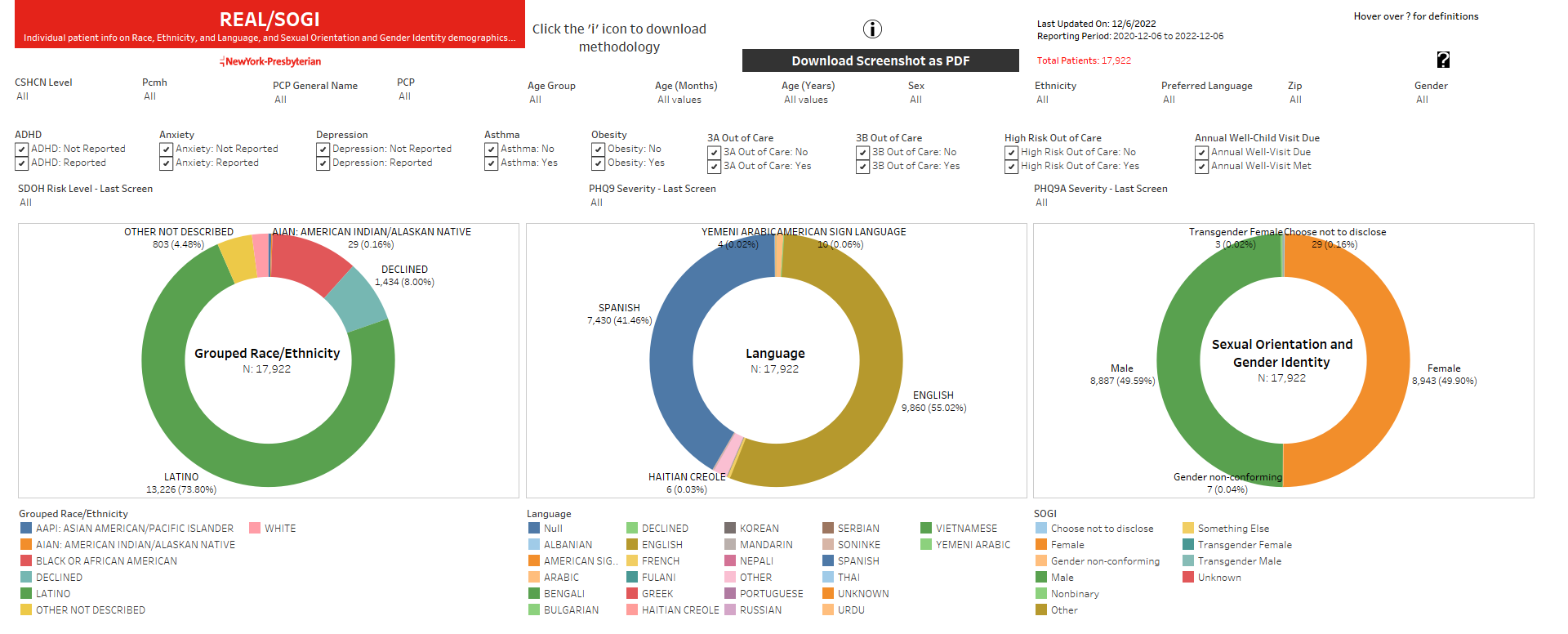Telemedicine/EHR/Medical Informatics
Telemedicine/EHR/Medical Informatics 3
640 - A Pediatric Population Health Dashboard to Support the Medical Home
Publication Number: 640.456
.jpg)
Luz Adriana Adriana Matiz, MD (she/her/hers)
Professor
Columbia University Vagelos College of Physicians and Surgeons
Columbia University Irving Medical Center
New York, New York, United States
Presenting Author(s)
Background:
Without comprehensive data, establishing a medical home for children can be challenging. There is a need to identify patients with chronic conditions, including behavioral and mental health, and to track emergency utilization and inpatient admissions. Additionally, understanding care coordination across the medical home team members is necessary to deliver optimal care and improve outcomes.
Objective:
To develop a pediatric population health dashboard to support the delivery of the medical home elements with particular focus on continuity, coordination, planned care, chronic condition management and culturally effective care.
Design/Methods:
An interactive dashboard was created from EHR data of four, urban academic practices, which serve as the medical home of nearly 18,000 children insured predominantly by NYS Medicaid. The dashboard includes all patients empaneled to the practices of faculty and residents, and has fields to filter by practice, pediatrician, social determinant risk, race, ethnicity, language, sexual orientation, gender identity and zip code. It identifies all children with special health care needs designated by level of risk for admission and emergency department utilization. All medical home team members including mental health providers, community health workers, and care managers are included. For routine care, the dashboard summarizes data of those children not up to date for well care. Finally, population focused data on children diagnosed with ADHD, asthma, depression and anxiety was incorporated to support outreach and monitor population level prevalence.
Results:
The dashboard includes a population of 17,895 patients, stratified by level of special health care needs to include 9,939 with no special needs and 2920 as a Level 1, 2951 as a Level 2, 1331 as a Level 3A, and 731 as a Level 3B. It also includes 192 patients currently enrolled in the community health worker program, 327 working with a care manager, 1961 with a social worker, 568 with a psychiatry nurse, 233 with a psychiatrist and 780 with a psychologist.
Conclusion(s):
The core elements of medical home delivery can be integrated into a pediatric population health dashboard to support the delivery of equitable, high-quality care in an academic general pediatric practice. It assists in ensuring connections to behavioral health and care coordination services as well as to identify those high utilizers of the emergency department and hospital who may benefit from increased services. Finally, it supports identifying patients who are out of care and need to be re-engaged in the medical home.



